Epic Games released version 5.1 of Unreal Engine, focusing on new and improved virtual production features. Many of these features are aimed at supporting in-camera visual effects with LED volumes. I had the pleasure of sitting down to a briefing with the media and entertainment team to learn about it. And here’s a quick rundown of what’s new:
Enhanced Support for Stage Operations
Stage operators working under pressure in the fast-paced environment of an LED stage will welcome a new dedicated In-Camera VFX Editor that supports a range of workflows tailored explicitly for the tasks they need to carry out. This eliminates the need for stage operators to hunt through the Outliner for specific objects and controls.
A corresponding iOS application that mirrors the editor’s functionality but with a UI adjusted for touch interaction is planned for release within the next few weeks. In related news, Epic improved the UI, UX, and performance of the Remote Control APIs, enabling you to construct powerful custom browser-based remote controls more quickly and easily.
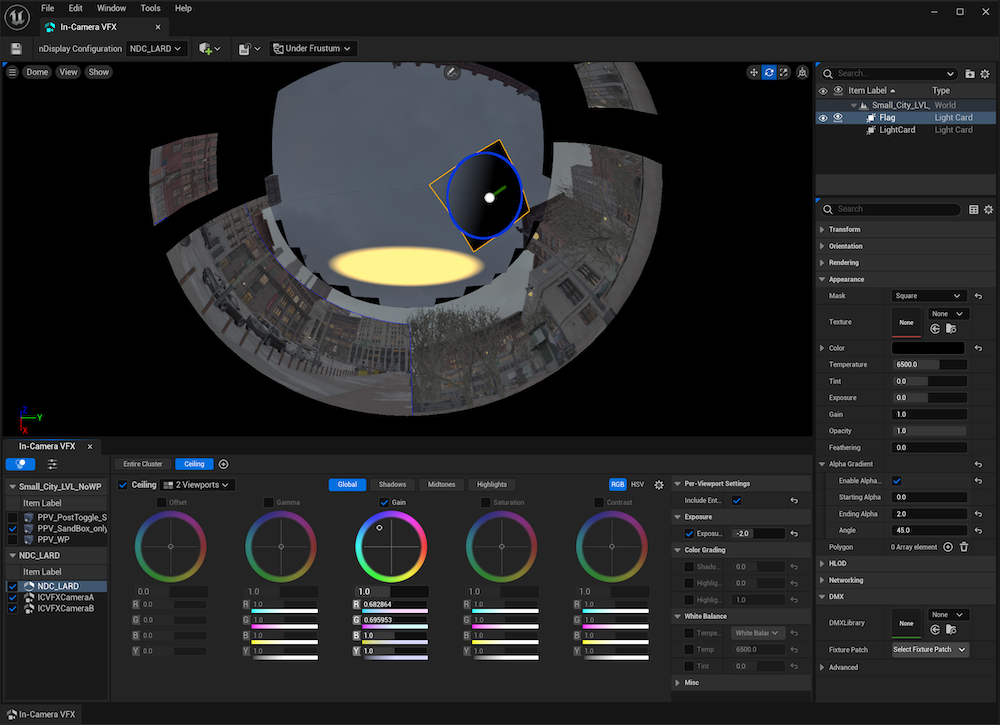
The new editor hosts an interface to an improved Light Card system that displays as a preview of the nDisplay wall. As well as making it intuitive and efficient to create, move, and edit light cards and save templates, the new light cards can retain their shape on the wall, eliminating distortion.
A key instrument in blending between the LED wall and physical set—as well as for fine-tuning the content on the LED wall—color corrections are critical to LED stage workflows. Also accessible from the In-Camera VFX Editor is new Color Correction Windows (CCWs) that enable the adjustments to be applied exclusively to anything behind them (similar to Power Windows in color grading applications such as DaVinci Resolve), together with the ability to use color corrections per Actor, which reduces the need for complex masking.
Improved Media Plate Workflows and EXR Playback
With Unreal Engine 5.1, a new Media Plate Actor enables you to drag and drop footage from the Content Browser. In addition, you can now play back mipmapped and tiled uncompressed EXRs both in the engine and with nDisplay with the appropriate SSD RAID. Epic also included the ability to convert EXRs to the correct format for optimum playback. This is great for rear projection and still image scenes that may not require full-blown 3D environments.
VCam Overhaul
Meanwhile, Unreal Engine’s virtual camera system has been overhauled with a new underlying framework that utilizes Epic’s Pixel Streaming technology for improved responsiveness and reliability. It also sports an updated UI with a modern camera-focused design that will be more familiar to camera operators. Epic also added the ability to connect hardware devices and laid the foundation for future UI customizing.
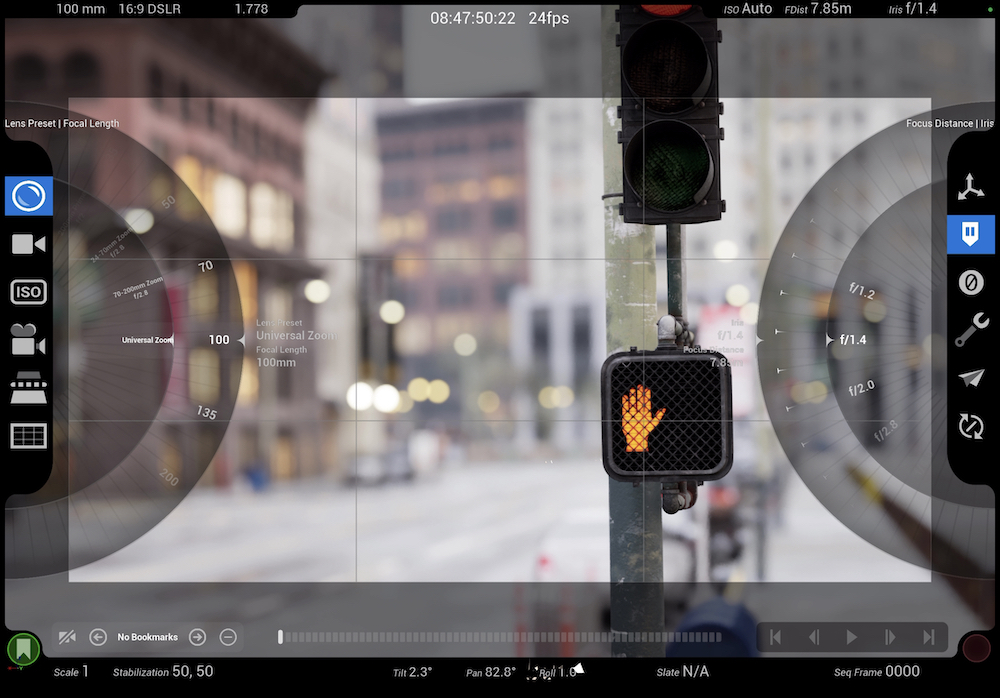
Improved DMX Workflows
To integrate Unreal Engine more seamlessly into the larger DMX ecosystem, Epic enhanced support for the MVR format to include fixtures, plots, and patches; when both Unreal Engine and a lighting console need to share DMX data, it can be synchronized between the two systems. Epic also improved the Pixel Mapping system UX to support the ever-increasing complexity of driving DMX lighting fixtures from Unreal Engine content data.
Lighting enhancements
Lumen, Unreal Engine’s fully dynamic global illumination and reflections system, now offers initial support for nDisplay. With Lumen, indirect lighting adapts on the fly when you change the sun’s angle, adjust lights, or position bounce cards, for example. Previously, these changes would have required a baking step that could pause production, interrupting the creative flow.
Currently, the number of lights supported is modest (about five to seven, depending on the graphics card). For more complex setups that require more lights, Epic also made improvements to GPU Lightmass, including support for Sky Atmosphere, stationary Sky Lights, light features such as IES profiles and Rect Light textures, and improved quality and performance across the board.
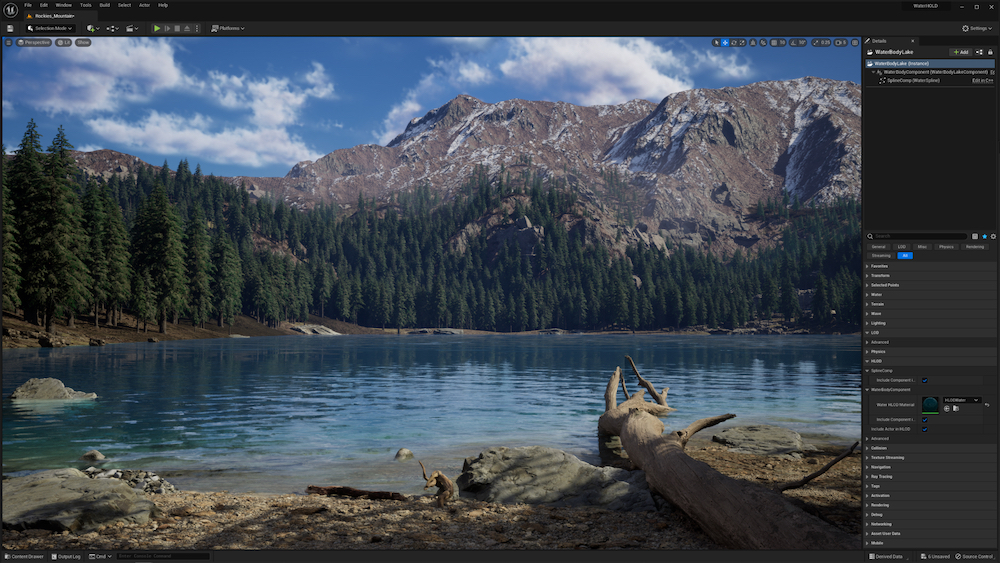
Animation And Rigging Enhancements
Unreal Engine 5.1 offers some worthy advancements to the built-in animation authoring toolset. The Machine Learning (ML) Deformer generates high-fidelity approximations of nonlinear deformers, complex proprietary rigs, or arbitrary deformation. It uses a custom Maya plugin to train a machine learning model, which runs in real-time in Unreal Engine.
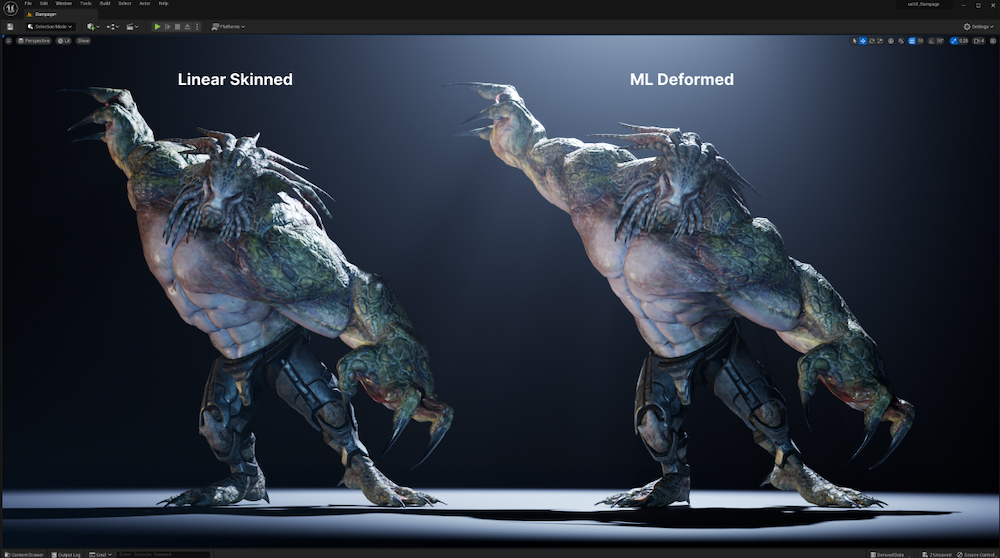
Other character deformation improvements include enhancements to the Deformer Graph Editor for easier graph creation and editing. On another front, Control Rig continues to expand toward fully procedural rigging, increasing the impact and scalability of rigging teams. Updates to the core framework include a new Construction Event that enables you to generate rig hierarchies via a graph and Custom User Events for creating and triggering rig events such as “Snap FK to IK.”
Additional Benefits
“This release is focused on craftspeople,” says Miles Perkins, Epic’s Industry Manager for Film and Television. “Whether we’re talking about the stage operator, director of photography, art director, etc.– this is getting to their needs and focusing on their workflows.”
“I would say the same on the animation front,” Perkins adds. “We have this amazing real-time tool, and we’re focused on supporting the individuals telling great stories in film and television.”
“It’s exhilarating to take two converging groups of creatives: gaming and filmmaking, and bring them together and see what they will make with this tool,” says Jordan Thistlewood, Epic’s Product Management Director for Virtual Production. “I’m looking forward to seeing what happens over the next six months to a year as projects start to pop up using 5.1. I think it will make a real difference for everyone involved.”
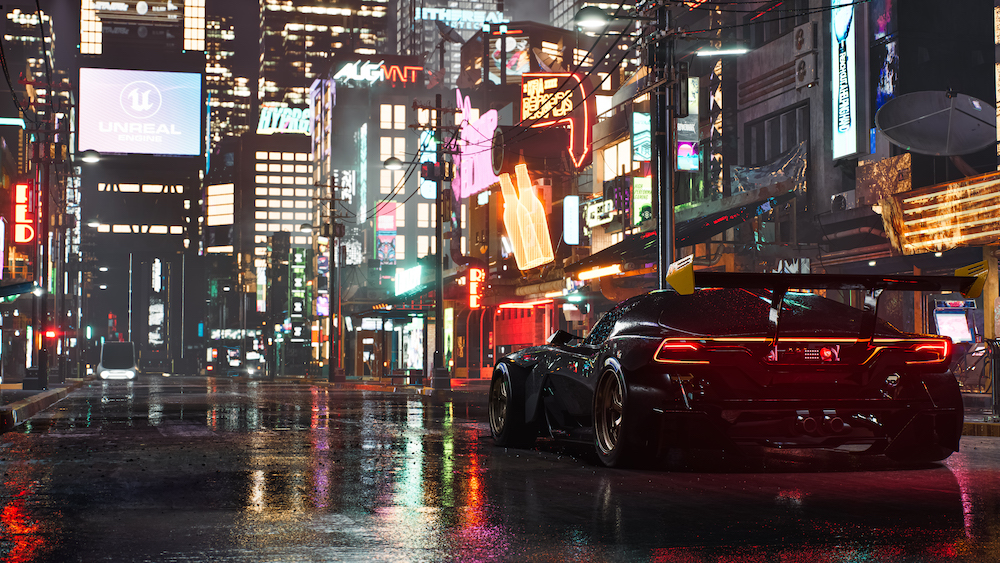
We have this amazing real-time tool, and we’re focused on supporting the individuals telling great stories in film and television.
Miles Perkins, Industry Manager for Film and Television
And that’s the story with Unreal Engine 5.1. For more information and to download the software for free, please visit Epic’s official website at: https://www.unrealengine.com.








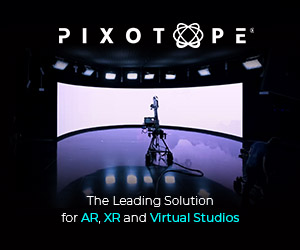
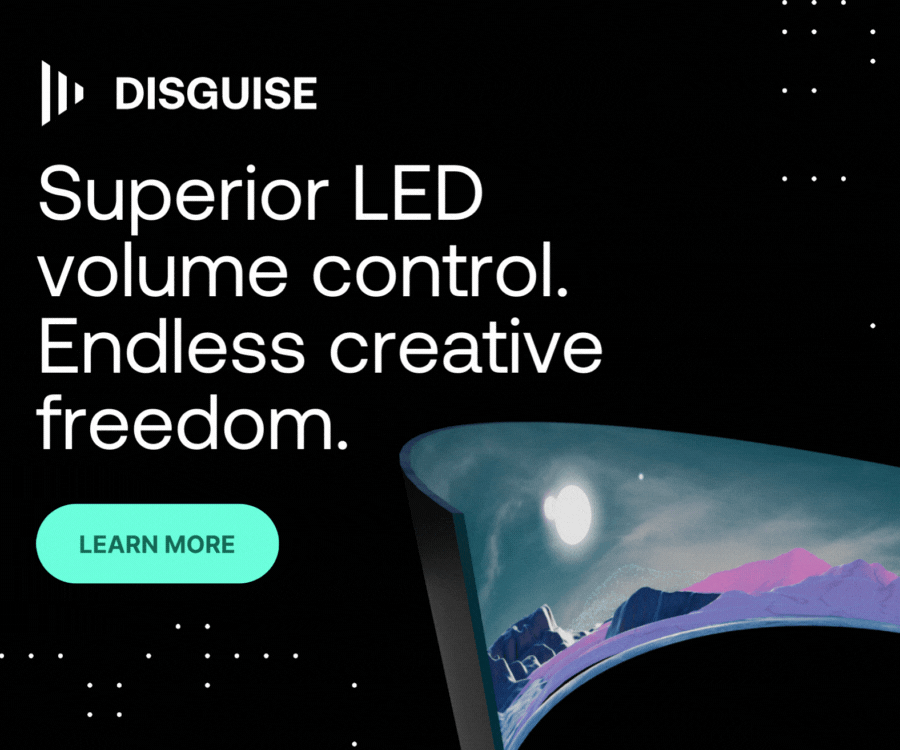

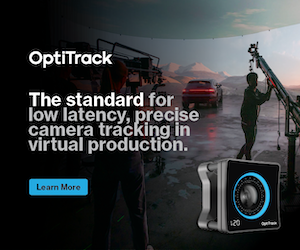

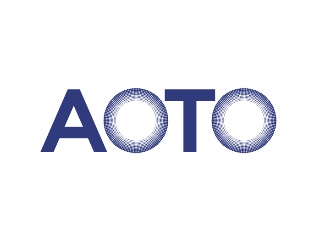

Leave a Reply